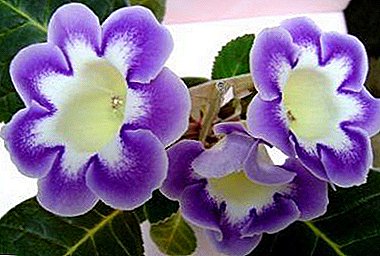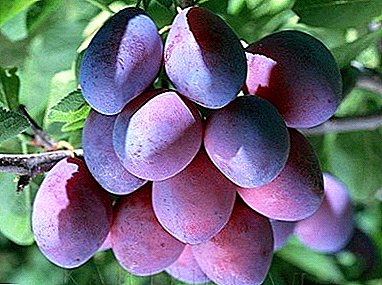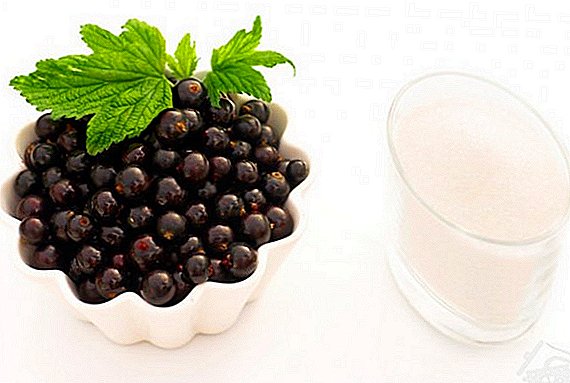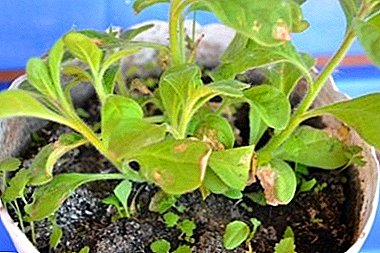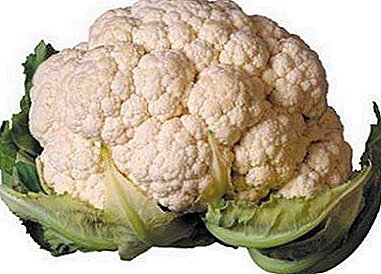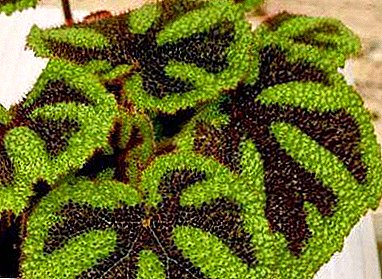
Imperial (Smaragdovaya) begonia is a perennial plant, originally from the tropics. It stands out with beautiful flowering and attractive leaves. Tropical beauty feels great in the indoor environment and is a wonderful interior decoration. In summer, the plant can be used as garden landscaping or veranda.
Despite the unpretentiousness of the plant, some conditions still exist. This article contains information about the proper care and methods of reproduction of the imperial begonia at home.
Botanical description and history of discovery
Imperial begonia is a decorative leafy species. In the tropical forests of Asia, Africa and South America it grows more than 900 species. For the first time this new plant was discovered during a trip to the places of the island of Haiti by French priest S. Plushje. In honor of the governor of this island, Michel Begon, and was named a flower. Imperial begonias have a delightful appearance.
Its emerald-green leaves, due to which the flower is also called emaragdum, have a heart-shaped form. Their length is 10-12 cm. The surface is covered with nipples, giving the sheet plate roughness and tuberosity. Flowers have a whitish tint and reach a diameter of 0.3-0.5 cm. At the apex, they are collected in buds with tassels up to 18 cm in height.
Appearance
This plant belongs to the perennial herbaceous decorative leafy species. The flowering period is January-April. Fame acquired 2 varieties of the imperial begonia. One of them, Iron Cross, is a plant 50-55 cm tall. It has a creeping stem, on which bright green leaves are located, the length of which reaches 15-18 cm. Wide brown bands are observed along their main veins. Another variety of imperial begonias is called Grus en Erfurt. The color of its leaves is different - from emerald green to marsh. Along the main veins there are wide strips of cream color. The peculiarity of imperial begonia is that male and female flowers are found on the stalks. In the female petals, a seed box with three faces is formed.
Where and how to plant?
Imperial (smaragdovuyu) begonia is mainly grown as a houseplant. If the weather is favorable, it can be planted in open ground, but in this case the flower should be planted in loose soil, rich in nutrients.
Important! In order to grow the imperial begonia you need to organize good lighting. A flower will not lose its beauty if it is replanted 1 time in 2 years.
Lighting and location
 The plant loves light, but it is impossible for it to fall into direct sunlight. Flower growers are advised to put a pot with a flower on the window sill, whose windows face either east or west.
The plant loves light, but it is impossible for it to fall into direct sunlight. Flower growers are advised to put a pot with a flower on the window sill, whose windows face either east or west.
The “Empress” grown up house requires consistency, therefore, it is necessary for her to pick up one place where she will stand all the time. Begonias need space, so this must be considered when selecting a place for it.
To increase the humidity of the air, it is necessary to turn the pan and insert it into a larger tray, and install a flower pot on top. Expanded clay poured around the inserted, which needs to be wetted. It is required to keep it hydrated. Also, to create optimal moisture, a flower pot can be put in wet peat.
The plant must be regularly ventilated, but it is afraid of drafts, very low and high temperatures. If you do not comply with all the necessary conditions begonia will wither, throw off the leaves and flowers.
Soil requirements
After picking up a pot for planting, it is necessary to take a small ceramic, they pour earth into it. You can buy ready-made mix in a special store or cook yourself. To do this, you need to mix 2 parts of leafy land and 1 part by each:
- sand;
- sod land or humus;
- peat moss.
You can add a little coniferous land and river sand. Soil acidity should be 5.5-6.5 pH.
How to care?
The plant feels great at any time of year at an air temperature of 18 degrees, although in summer it tolerates a slight increase. Begonia loves fresh air.
The flower needs systematic moderate watering. Its roots are negatively affected by both the lack of moisture and excess. The plant needs to be watered when the surface of the soil is completely dry. For irrigation, warm, separated water is taken. Imperial begonia is a tropical plant species, therefore it needs high air humidity., which must be at least 60%. However, splashing is not necessary, because brown spots can form on the sheets.
Attention! In winter, imperial begonia must be kept away from the window. Cold air affects the flower destructively.
Imperial begonia responds well to the spring transplant. Pot by this time becomes a small flower. This leads to the fact that it loses its decorative effect, the leaves become dull. After transplanting the plant must be cut. As a result, it will branch out. Cut the tip can be rooted.
Common diseases and pests
There are diseases that imperial begonia can cause. One of them is powdery mildew. In this case, the leaves are covered with rounded spots with a white bloom, under it looks brown. Gradually, they become larger and diverge across the plate. The causes of this disease in low humidity and high temperatures.
When gray rot, the leaves of imperial begonia become sticky, they form watery spots with a gray bloom. Gradually rotting stem and leaves. Gray mold may appear due to:
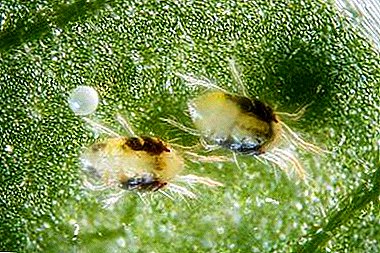 excessive watering;
excessive watering;- high air temperature;
- high humidity.
There is also such a disease as vascular bacteriosis, affecting the vessels of the plant, which become black. As for the leaves, they begin to wither along the edges, then turn yellow and turn brown.
Another disease is the leaf nematode, which the plant infects through the soil. In this case, the edges of the leaves lose their elasticity and dry out. Then yellow and brown spots appear on it. It happens that the begonias do not like the conditions of detention, then the edges of its leaves will dry out, in the future they will fly around and the trunk will become naked.
The flower may suffer from pestswhich include:
- greenhouse aphid;
- scytworm soft;
- greenhouse thripsis;
- mealybug;
- greenhouse whitefly;
- gall nematode.
Breeding features
Imperial begonia is most often propagated by stem cutting. However, it easily multiplies:
- dividing the bushes;
- parts of the sheet;
- seeds.
For its reproduction by cuttings, the stalk is taken, which is divided into parts of 3 cm in length. They are thoroughly pressed into the soil, which is preferably heated from the bottom. This will help the process to take root faster.
The method of breeding begonias of imperial roots is to carefully divide the root system into several parts, which are planted in the prepared loose soil.
In order to propagate a plant with the help of a leaf it is necessary:
- Divide the knife into triangles. It must be remembered that when dividing the vein should be at the top of the leaf.
- Then they are laid out on the ground and tightly pressed.
- Be sure to cover the film. The leaves need daily ventilation.
- The emergence of shoots must wait about a month.
- After the shoots are strong, they need to be planted in separate pots.
Imperial begonia belongs to unpretentious plants. She does not need special care. Today there are many varieties and sizes of this beautiful plant.
We offer for viewing a video lesson on the breeding of begonias with a leaf:


 excessive watering;
excessive watering;